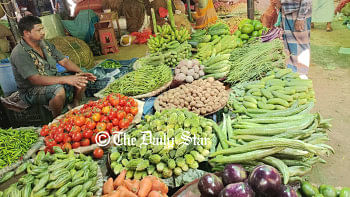Inflated export figure leaves businesses upset

The adjustment of export figures that saw shipment values plummet by nearly a staggering $14 billion in the first 10 months of 2023-24 from a year ago has left several businessmen disappointed.
They argued that owing to the inflated export figures, it was difficult for them to convince the government that they were having a difficult time because of the global and local economic crises, the foreign currency shortage, the higher energy costs, and the elevated cost of production.
In May, data from the Export Promotion Bureau (EPB) showed exports stood at $47.47 billion in the July-April period of FY24. It fell by $13.8 billion to $33.67 billion after the central bank on Wednesday released the adjusted data in line with the prescription of the International Monetary Fund (IMF).
The previously higher growth was reported at a time when the economic situation remained volatile at home and aboard, owing to the lingering impacts of the coronavirus pandemic and the Russia-Ukraine war.
For example, garment exports, which account for 85 percent of national sales abroad, shattered records month after month although western retailers and brands were posting sales slowdown because of the stockpiling of unsold inventories and lower demand for high inflationary pressure.
A number of business leaders yesterday said the government and policymakers received wrong ideas about the situation although the condition of various economic indicators deteriorated.
For example, the government has cut cash incentives for exporters and the prices of utilities like gas and electricity were raised, they alleged.
The cut in the cash incentives came also because of the government's efforts to reduce its subsidy burden.
Mohammad Hatem, executive president of the Bangladesh Knitwear Manufacturers and Exporters Association, said the inflated data has impacted the business severely because policymakers have framed policies based on it.
"Looking at the higher export of merchandise over the years, the government had thought that the export sector had been doing well although the real picture was different."
Like others, Hatem, on several occasions, publicly said that there was a big mismatch between the actual export proceeds and the data released by the EPB. However, no visible steps were taken by the government to make the required amendments.
The suspicion deepened, Hatem explained, when the issuance of the vital Utilisation Declaration (UD) for exports from both the BKMEA and the Bangladesh Garment Manufacturers and Exporters Association did not support the EPB data.
Md Amin Helaly, senior vice-president of the Federation of Bangladesh Chambers of Commerce and Industry (FBCCI), said it is sad that the incidence of wrong data presentation had taken place in the case of exports.
"The amount is also high."
He urged the government to ensure data accuracy when it comes to various economic indicators because the figures play an important role when the government prepares plans and policies.
Mustafizur Rahman, a distinguished fellow of the Centre for Policy Dialogue, urged the government to look at the data in other areas such as economic growth, incentives, GDP calculation, and per capita income since the numbers don't match reality.
Due to multiple counting of export shipments, policymakers may take the wrong policies, he said.
FBCCI President Mahbubul Alam claimed local sales made by the factories located inside of the export processing zones are also considered as exports. If such sales are considered, the $14 billion gap will not seem incorrect, he said.
State Minister for Commerce Ahasanul Islam Titu backed the EPB, a body under the commerce ministry, saying it just compiles the export data received from the National Board of Revenue (NBR) and the Bangladesh Bank (BB). "The EPB does not have its own data source."
Titu also said the amount might be a bit higher as the sales of yarn and fabrics by the local factories are included while calculating the national export volume.
The commerce ministry has initiated a project so that the EPB can collect the primary data to prepare the final figure, he said.
An official of the EPB, asking not to be named, said: "We only have access to the data when goods leave the country. If a consignment returns, the EPB does not have the chance to know it as it is monitored by the BB and the NBR."

 For all latest news, follow The Daily Star's Google News channel.
For all latest news, follow The Daily Star's Google News channel. 



Comments